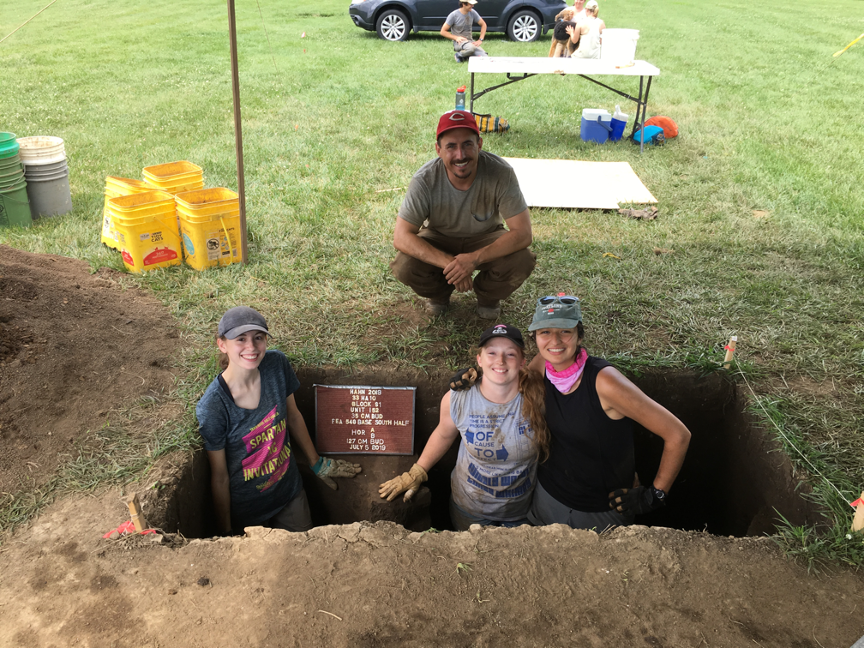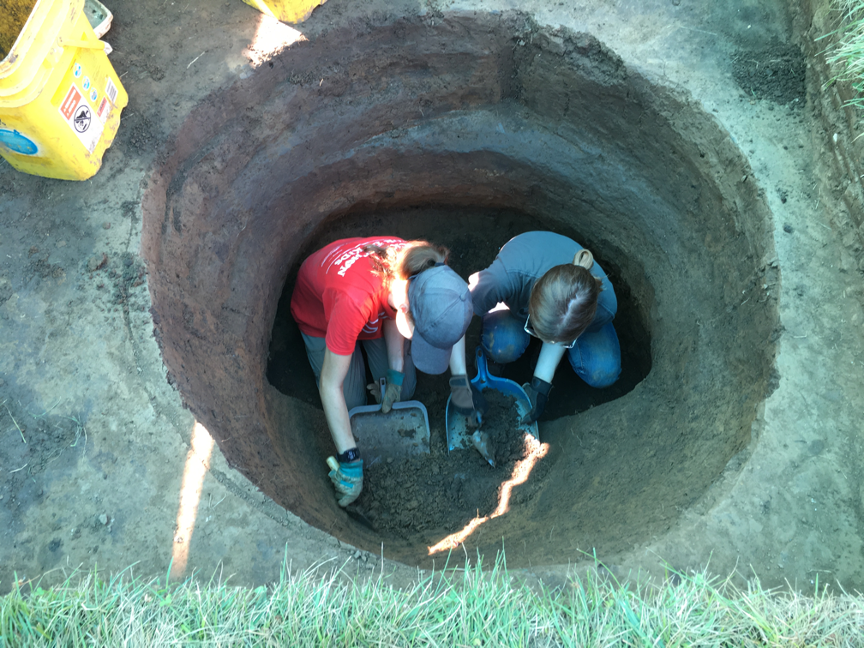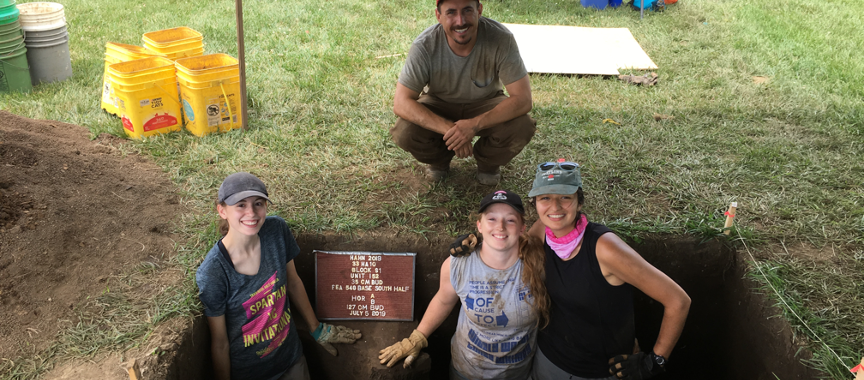
CMC Blog
The “Dirty” Dozen
By: Bob Genheimer, George Rieveschl Curator of Archaeology
For the last dozen summers, like clockwork, Cincinnati Museum Center’s archaeologists have been exploring a Late Prehistoric village site in Anderson Park District’s Clear Creek Park in the Little Miami River Valley near the Village of Newtown, Ohio. The Hahn site, one of the largest and most intensively occupied Fort Ancient-age sites in the Ohio Valley, was occupied at least intermittently from the 13th through the 17th centuries. Our excavations have uncovered lots in those 12 years. And, even though we still have several more years of processing and analysis ahead of us, let’s take a quick look at what we have accomplished.
First the numbers. CMC archaeologists, with the aid of nearly 100 volunteers and 25 interns (Figure 1), spent 240 days in the heat and humidity of July excavating 166 excavation units, covering about 6725 square feet or 0.15 acres. With the Hahn site measuring between 10 and 12 acres that means we impacted only about 1.5% of the site. This is actually good, because archaeologists only have to sample a site, and we are leaving most of the site to future investigators. This, of course, doesn’t take into consideration the depths of our excavations, where pits were routinely dug to depths between 3 and 6.5 feet. We used a lot of hard work and muscle.
Speaking of pits, we identified over 500 archaeological features (e.g, discrete concentrations below the surface) within the relatively small area we excavated. More than half of these features were post molds, most representing the location of a timber post to a Fort Ancient house. The Native American Fort Ancient culture flourished from around 1000 to 1750CE. Nearly a hundred of the features were trash-filled storage pits (Figure 2), large and deep holes in the ground that had been dug to accommodate storage of food stuffs, but later used for trash disposal. A dozen and a half earth ovens were also excavated.
During those long months over a dozen years, we explored the rich midden (e.g., the darkened soil and trash associated with everyday living) in the upper parts of the site, a variety of below-ground pits utilized as storage, cooking, or disposal features, the remains of houses, and even an earlier Hopewell-age (ca. CE 1-400) circular earthwork near the edge of the village plaza. Stay tuned, as we look into many of these things in depth over the next few months. It gets really interesting. I promise!

Staff and interns celebrate the completion of a pit feature.

Field school participants excavate the second half of a large trash-filled storage pit.
Museum Admission
Includes Cincinnati History Museum, Museum of Natural History & Science and The Children's Museum
| Adult: | $22.50 |
| Senior: | $15.50 |
| Child: | $15.50 |
| Member Adult: |
FREE |
| Member Child: |
FREE |
Members receive discounts!
Become a Member today to save on programs, exhibits and films throughout CMC.
Museum Hours
Open Thursday – Monday
10 a.m. to 5 p.m.
Closed Tuesday and Wednesday
Closed Thanksgiving Day and Christmas Day
Member’s-only early entry: Saturdays at 9 a.m.
Customer Service Hours:
Monday – Sunday, 9 a.m. to 5 p.m.

